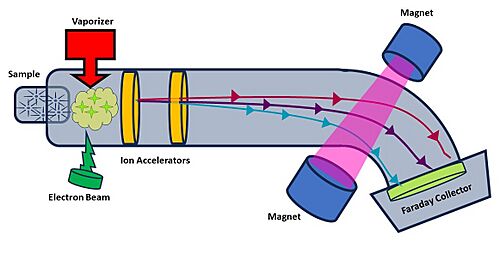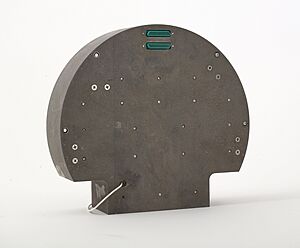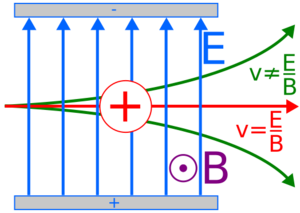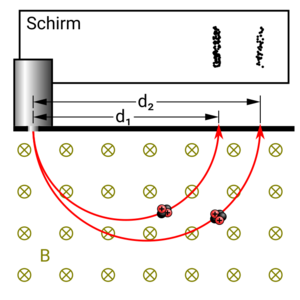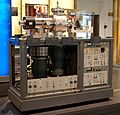Mass spectrometry facts for kids
Mass spectrometry is a scientific method that helps us understand tiny particles. It measures something called the mass-to-charge ratio of charged particles. This means it tells us how heavy a particle is compared to its electric charge.
Scientists use mass spectrometry for many things. It can help them find the exact mass of particles. It can also show which basic chemical elements are in a sample. This method is also great for figuring out the structure of molecules, like the building blocks of proteins.
How Mass Spectrometry Works
A mass spectrometer is a special machine that performs several steps to analyze a sample. Here are the five main steps it takes:
The Five Steps of Mass Spectrometry
Step 1: Turning into Gas (Vaporization)
First, the substance you want to test needs to be a gas. If it's not already a gas, it's put into a special tube. This tube heats the substance a lot until it turns into a vapor. This way, the sample can easily move through the mass spectrometer.
Step 2: Making Ions (Ionization)
Next, the gas particles are hit by a beam of electrons. These electrons come from an "electron-gun." When the electrons hit the sample, they knock off some electrons from the sample's atoms or molecules. This changes the sample into tiny particles that have a positive electric charge. These positively charged particles are called ions. Making them charged is important because it allows the machine to control them with electric and magnetic fields.
Step 3: Speeding Them Up (Acceleration)
After becoming positively charged ions, the particles are pulled through an electric field. This field has negatively charged plates. The positive ions are strongly attracted to these negative plates. This attraction makes the ions speed up very quickly. They get ready for the next part of the process, where they will be tested.
Step 4: Sorting Them Out (Separation)
Now, the fast-moving ions enter a strong magnetic field. This field acts like a sorter. Lighter ions with a smaller mass-to-charge ratio will be bent more by the magnetic field. Heavier ions, which have a larger mass-to-charge ratio, won't be bent as much. Think of it like a strong wind: it pushes a light feather much more than a heavy rock. Most atoms usually have just one charge. So, for these, lighter atoms will change their path a lot, while heavier atoms will keep going straighter.
Step 5: Counting Them (Detection)
At the very end of the mass spectrometer, there's a detector. When an ion hits this detector, it creates a tiny electric signal. This signal is then made much stronger so a computer can easily notice it. The strength of the signal tells us how many ions of that specific type hit that spot. Ions of the same type will always hit the same exact spot on the detector.
What Can We Learn?
By collecting all this information, scientists can find two main things:
- The mass-to-charge ratio of the particles. This helps identify what the particles are.
- The relative abundance. This tells us how many atoms or molecules of each type were in the original sample.
History and Uses
The very first mass spectroscope was invented in 1912 by a British scientist named J. J. Thomson. His student, Francis Aston, then improved it so it could be used for real-world problems.
Today, mass spectrometers are used in many different areas:
- Farming: To check the quality of soil or crops.
- Food and Drinks: For making beer and processing food, to ensure safety and quality.
- Earth Science: In geology, to study rocks and minerals.
- Energy: For finding petroleum.
- Medicine: To measure drugs in the body.
- Space Exploration: To analyze samples from other planets.
Often, mass spectrometers are used together with another system called chromatography. Chromatography helps prepare the sample, making it easier for the mass spectrometer to analyze.
Images for kids
-
Replica of J. J. Thomson's third mass spectrometer
-
Calutron mass spectrometers were used in the Manhattan Project for uranium enrichment.
-
Surface ionization source at the Argonne National Laboratory linear accelerator
-
Indianapolis Museum of Art conservation scientist performing liquid chromatography–mass spectrometry
-
NASA's Phoenix Mars Lander analyzing a soil sample from the "Rosy Red" trench with the TEGA mass spectrometer
See also
 In Spanish: Espectrometría de masas para niños
In Spanish: Espectrometría de masas para niños


